Fires
- Special Price £510.92 was £650.00 Save: £ 139.08
Valor Trueflame Homeflame Full Depth Gas Fire
In stock - Special Price £315.70 was £400.00 Save: £ 84.30
Dimplex Mini Mozart Electric Fire Suite - MMZ15
In stock
While selecting a gas fire or gas heater, gas stove or wood burning stove the most essential and basic dynamic in this process is to keep in mind that your decision should be based on its heating capacity. It is most likely that most of the people might be unaware of the fact that to warm a normal single living room it requires just 3 to 4 kilowatts heat output. It is an obvious fact as most of the modern houses by now have a central heating system which means they are already being taken care of in the harsh winters. This leads to the idea that most of the fires are just used as a partially ornamental part of the living room or to provide extra heat.
In the selection of the fires, the buyers have a major general oversight of selecting the gas fire or gas stoves having a too high heating capacity. As a result of this oversight, the users can utilize the fires or stoves like once in a blue moon or burning them up at a low temperature or the room might get excessively hot. While this slip-up happens in the case of wood burning stoves and gas heaters it leads to much-reduced combustion, elevated smoke and heat give out and the glass gets blackened. On the other hand, considering the gas fires specifically the all these scenarios will obscure your fire-view and you will not be able to take pleasure from the beautiful images of the flames if the glass is blackened.
It is quite simple and easy to calculate the heating capacity you require for your specific room space. If you follow the chart given below you can see that it clearly shows the capacities in kilowatts (KWs) and the space in cubic metres (m^3). To figure out the measurement of the room in cubic metres you can multiply the length of the room space by its width and height. After that, you can easily get the information on the heating capacity you require for your room space from the graph at the meeting point of one the three lines. These lines represent to which level your house is being insulated.
|
A
|
B
|
C
|

This graph will prove to be helpful in your decision of selecting from a vast collection of gas fires and wood burning stoves along with the information on the matter of heating capacity best matching with your room space requirements.
Apart from the heating capacity, another equally important factor in selecting a fire is the option of open and closed combustion aka conventional flue system and balanced flue system. It is a general idea that the term ‘open combustion’ is mostly associated with open fireplace lacking a glass front which is not correct. In actual, fires with open combustion means that the air in these fires is taken out from the room in which they installed and the flue gasses in these fires are eradicated through a single flue. While in closed combustion the process similarly reciprocates but the hot air is re-circulated in the entire room before letting it out through flue giving out more warmth.
While selecting a wood burning fireplace or stove, it is a most basic requirement that your home must have good ventilation as these fireplaces and stoves mostly come with open combustion system. On the other hand, on some special occasions as homes having ‘Balanced Ventilation System’, there is a range of fires and stoves which come with exterior air feeds. With the passage of time, there is seen a gradual increase in the number of the fires and stoves with exterior air feeds as an essential feature, whilst they are provided as an extra accessory with some fires and stoves as well. In fires and stoves with the exterior feeds, the combustion air is taken out from the outdoors. Nevertheless, the flue in these fires and stoves all the time has to be in horizontal position and should go upwards, all the way through the roof and outdoors, and it should reach higher than the roof height.
Alternatively, there are the fires and stoves with closed combustion system through which the combustion air is straightly pulled out from the outer side and the same flue is used to extract the flue gasses. The roof or the outside walls can be utilized to supply for this extraction process. This whole extraction process indicates that there is a supplementary flexibility in the accurate installation of the stove or fireplace. Given to the fact that in this combustion system the oxygen is extracted rather from the out-of-doors than the indoors of the room containing the stove or fireplace, this combustion system is perfectly suitable for homes which are well-insulated, contemporary and have an automatic ventilation system. It is always preferred and suggested to go for the closed combustion system where it comes to the gas fires. On the other hand, if you have plans to link your stove or gas fire to an already existing chimney with a diameter of less than 150mm then you should go for the open combustion system as fires or stoves with this system needs a smaller flue.
We are hopeful and optimistic that after going through this article you would be now crystal clear in your choice of selecting the right fire or stove. Besides that you also want to have an in the flesh look on the fire or stove of your choice while they are in action along with a special guidance from the individual experts.
As we already have suggested that for an expert advice you can turn to us at Banyo by giving us a call or visit our showroom in Leicester which has more then 30 gas fires, electric fires and stoves on display or you can also connect with us through an e-mail for any kind of either tailored or supplementary information or counseling you might be looking for your stove equipment and installation. We will be glad even to send through the sketch for assisting you in visualizing the fireplace or stove as per the requirements of your home design and style.
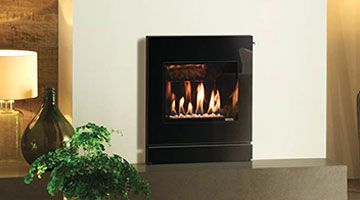
The Logic Convector is a comparatively more powerful and effective counterpart of the Logic Hotbox. Similar to the Logic Hotbox, the Logic Convector is suitable for all available chimney types. This fire also offers both the coal or fuel bed options (1) and you can choose either the manual or remote-controlled version.
Read More
DRU Maestro series: clean design, lots of glass and even more authentic, natural fire through totally new burner technology. In addition, Maestro fires have Eco Wave, which ensures lively flames, even at lower temperatures.
Read More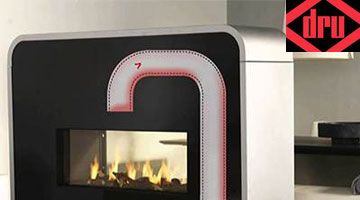
DRU Verwarming B.V. will introduce at the DRU Roadshow, May 2011, a new and revolutionary flue system that enables a gas fire to be located almost anywhere in the home. The DRU PowerVent® system makes it simple to install a gas fire in homes both large and small, from a loft apartment to a terraced house. Importantly, it offers architects an ideal solution for creating unusual configurations.
Read More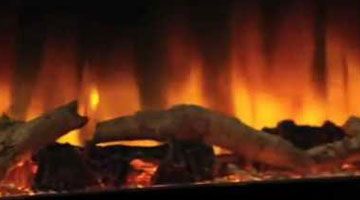
Flamerite Junai OmniGlide is an elegant floor standing fire suite of Flamerite Fires. Flamerite OmniGlide also likes other Flamerite electric fires has a concealed heater with 2 heat settings providing it with the heating capacity of 1kw/2kw. It has a multifunctional remote control with dimmers function as well as having a manual control system too. It is fixed into the wall with a moving glass front which provides an infinite flame picture and an enclosed fuel bed. Flamerite OmniGlide comes
Read More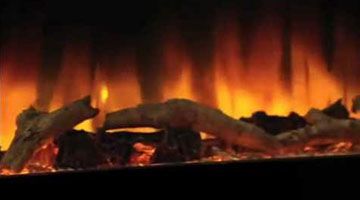
Flamerite Junai Omni 2 is an elegant floor standing fire suite of Flamerite Fires. Flamerite Omni 2 also like other Flamerite electric fires has a concealed heater with 2 heat settings rendering it the heating capacity of 1kw/2kw. It has a multifunctional remote control with dimmers function as well as having a manual control system too. It is fixed into the wall with an open-fronted fuel bed view which provides an infinite flame picture. Flamerite Omni 2 comes into the grey mirror, black
Read More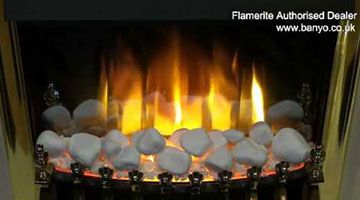
RadiaFlame 3D-white pebbles offer a striking focal point in any modern or traditional style of setting. This contemporary Flamerite comes with a choice of fuel effects: White Pebbles and Glass Beads or Logs.
Read More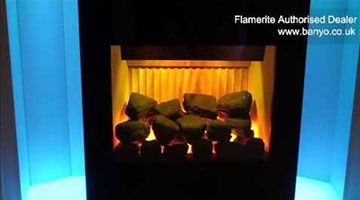
This Contemporary Stove comes with a Solar Flare 3D flame picture available with either coal or logs, Black or Cream & come with a remote. Flamerite Little Atom Stove has a Multifunction remote control including dimmer, Hidden Heater and Choice of flue pipes.
Read More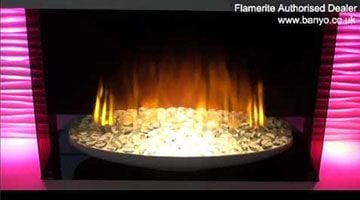
Radia 3D Luma Bowl Glass Pebble offers attractive flame effects in the Flamerite Fires range. Luma wall mounted suite comes in in Ivory Cream, Pastel Grey finish has a choice of fuel effect and a multifunction remote including 16 Separate 16 colour LED downlighting suite as standards.
Read More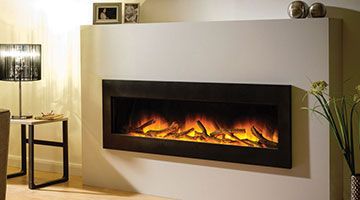
Omniglide RadiaFlame 3D Provide a striking focal point in any style of the room. Omniglide comes with a choice of fuel effects: White Pebbles & Glass Beads or Logs. Flamerite offers to wall-mounted or Insert options with a choice of colour finish including Grey Mirror, Black Mirror, stone or Graphite.
Read More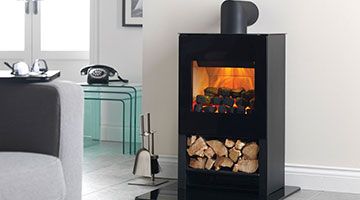
Flamerite Apollo Tall Electric Stove is a beautifully stunning and modern addition to your home interior. It comes with a choice of fuels: logs or coal. this multi-functional remote control Fire available as cost option is ideal for most of the home.
Read More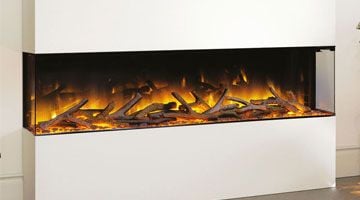
This stylishly RadiaFlame 3D is guaranteed to make an impression in any home, modern or traditional. This Multifunction remote control 3D RadiaFlame Flamerite electric fires comes with fuel choice of driftwood pebbles and as standard, Log & Embers as a cost option.
Read More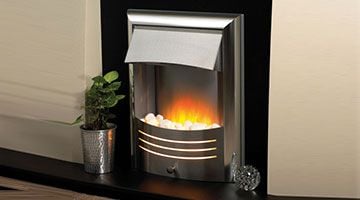
The Flamerite Fires Cisco is simple yet contemporary and effective inset electric fire. cisco 16 inches electric fire has Silver and Brass colour finish with Choice of fuel effects: Coal, Pebbles or Glass Beads. this Flamerite electric fire is easy to use and control.
Read More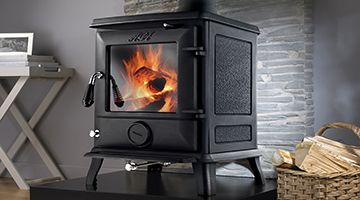
The everlasting attraction of the cast-iron stoves is something you cannot ignore. Aga Traditional stoves with their exquisite details, clean designs and stunningly efficient heat output with a large viewing glass will become the focal point of your home.
Read More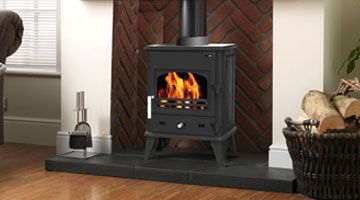
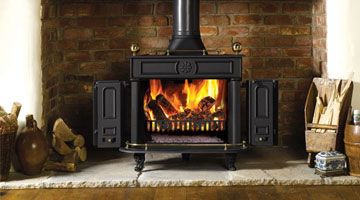
As you know Stovax & Gazco are well-known for manufacturing a collection of eye-catching and modern wood burning, multi-fuel, gas and electric fires and fireplaces. The following video gives you information about the best collection of wood burning, multi-fuel, gas and electric fires and stoves to select the righ one within your budget and according to you style and taste.
Read More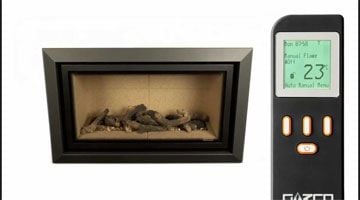
Watch this video carefully to follow our directions for using all the items and functions that are available to you in this thermostatic remote control from the basic functions to the programmable options. All the services are described in a crystal-clear, bit by bit, thus making it very simple and uncomplicated for you to use your thermostatic remote control.
Read More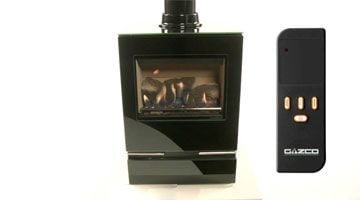
By watching the following video you will be able to understand the steps of using the standard remote control for your Gazco fire or stove. We provide you very simple and easy to follow directions thoroughly giving you an illustration on the remote control along with the depiction of the flame effects the fire will give out.
Read More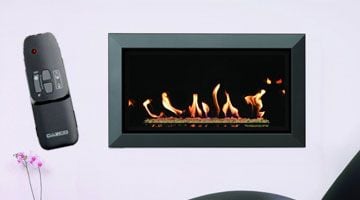
Watch the following video and you will find a complete directory of as how to use the Gazco Open Fronted Studio Fire remote control. This Standard remote control system let you to light your fire, select between different flame settings and heat outputs, and you can perform all these functions while sitting in your comfortable sofa.
Read More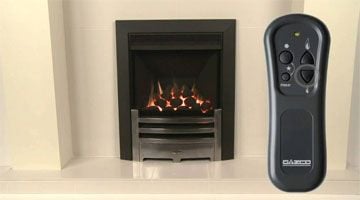
We now provide you with a comprehensive visual demonstration regarding the usage of the infrared control system for your Gazco E-Box & E-Studio fires. All you need to do is watch this video very carefully and it will be a piece of cake to employ these instructions to run the infrared control system.
Read More
Having any difficulty in understanding the control system of your Gazco fire? Watch the following video and learn the easiest ways to operate the control system of your Gazco fires whether it is controlled by a standard remote control or with thermostatic remote control.
Read More
We now give you a detailed yet comprehensive guideline in replacing the batteries in your Gazco fire with ease. The following gives you a complete visual demonstration while you just have to watch and follow the instructions carefully regarding how to remove the old batteries in the touchpad and replacing them with the new ones.
Read More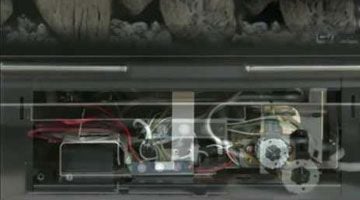
Watch the following video carefully, and it will actually lend you a hand in understanding the complete procedure step by step as to how you can pair your standard remote control with the power unit of your Gazco fire or stove. If you have any difficulty in understanding the procedure shown in the video you can also consult one of our technicians for further assistance.
Read More
Not clear as to how to install the infrared sensor on your Gazco E-Box & E-Studio Fires? Well, there is no need to worry as we are providing you with a visual demonstration regarding its installation. You just need to watch this video with attention and you will know what relevant parts you need to collect and it will be as easy as ABC to install the infrared sensor.
Read More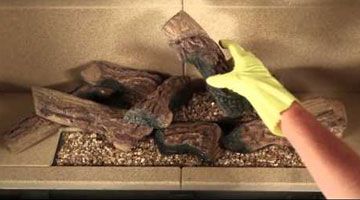
Watch the following video and you will get access to the most easily understandable information about cleaning the Gazco Riva2 800 & 1050 fires. In this video we have provided crystal-clear instructions for the users to show them how they can easily access the vital components, which need cleaning, of these fires along with complete information regarding the cleaning process.
Read More
Gazco E-Studio definitely gives a modern look to your home. Not only it has beautiful appearance and efficient functioning but it is also very easy to clean once you completely understanding the procedure as it also requires a bit of carefulness too. So watch this video as it will provide you with a step by step and very easy to understand guide for the cleaning procedure.
Read More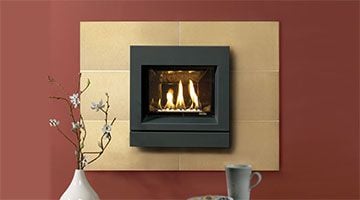
Are you getting huffy to clean your Gazco E-Box fire? Surely you don’t want to make any mistake that might damage your fire. Let’s not worry anymore! Watch this video carefully and have a complete understating as how you can clean your Gazco E-Box Fire very easily without causing any damage to it.
Read More
Fires with Activeheat give out radiant heat but also draw in cold air from the room, this passes through the heat exchanger to warm the air which is then circulated back around the room. The result is that the room is heated much faster than by radiant heat alone.
Read More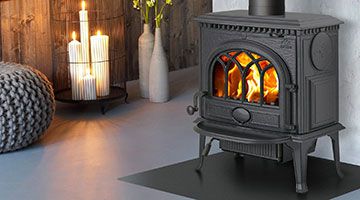
Over time consumable products such as stoves and wall heaters tend to slowly become dirty as air-borne particles are sucked in during combustion in either balanced or conventional flues. These small particles eventually hinder the fire or stove ignition.
Read More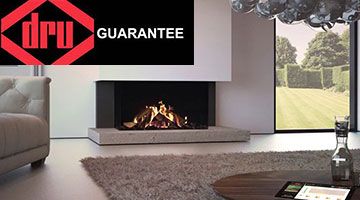
All products by DRU meet very strict high-quality standards.
Read More
One of the most important factors when choosing a gas or wood-fired stove is its capacity. People are often unaware that the average living room space requires only 3 to 4 kilowatts (kW) to warn the room.
Read More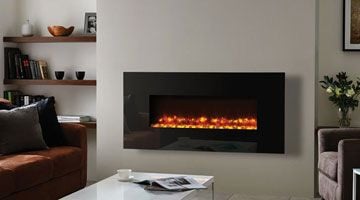
Gazco now brings a variety of extraordinary & multipurpose modern electric fires for they are very handy to be installed virtually in any location of a house counting the kitchen and bedrooms. Whether it is the contemporary range of Gazco electric fires & stoves or the traditional ones, they all will become the centre of attraction in your home. This video will actually assist you in going for the right one electric fire that would be according to your style and within your budget.
Read More
Stovax and Gazco Accessories and Hearth Products 1 Year Warranty
Read More
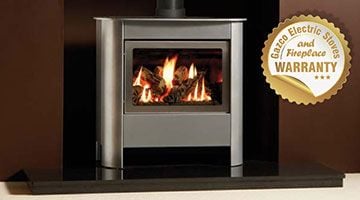
Gazco Electric Stoves and Fireplaces 2 Year Warranty
Read More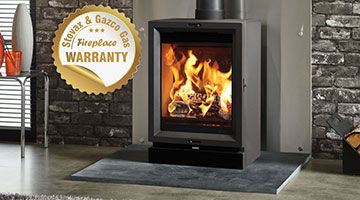
Stovax and Gazco Solid Fuel and Gas Stoves and Fireplaces 5 Year Extended Warranty
Read More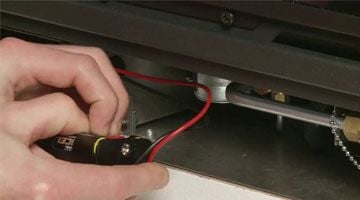
It is necessary to pay proper attention to the alerts that your appliances give out to you. Similarly when the E-Box & E-Studio need a change of batteries they give you alerts. Watch the following video to understand completely the procedure of changing batteries in these gas fires as well as how you can understand the alerts produced by Gazco E-Box & E-Studio Fires.
Read More
Flavel gas fires have been well-reputed and admired for their high-efficiency heat output in the heating industry. Most of the Flavel gas fires are up to 94% heat efficient.
Read More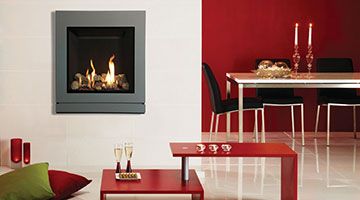
If you are looking for modern, elegant and heat efficient gas fires then Riva 2 530 and 630 by Gazco is the perfect choice for you. As these contemporary gas fires of Gazco are manageable with a thermostatic remote control with multiple functions while you can do it from your sofa-spud. Watch this video get thorough information before you buy these gas fires.
Read More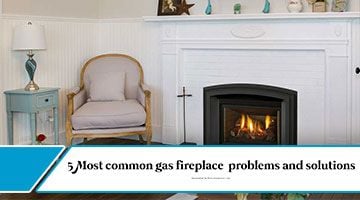
Gas Fires An Excellent and Stylish replacment to Woodburning fireplace. According to the survey conducted in 2016, almost oven 350,000 fire accidents reported due gas not fixing these common gas fire problems.
Read More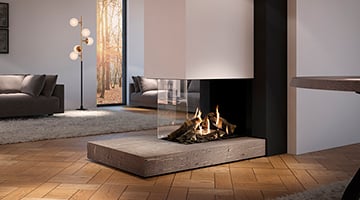
Modern homes are theme-based, where every room, painting style, and curtain-style are according to a specific theme. If you have home interior and home furniture of the same theme, this is called “blending in”. The same goes for modern gas fires. Consider a beautiful single-sided fireplace built into a tiled wall or an ultra-modern look with a two sided, three sided or tunnel fire.
Read More